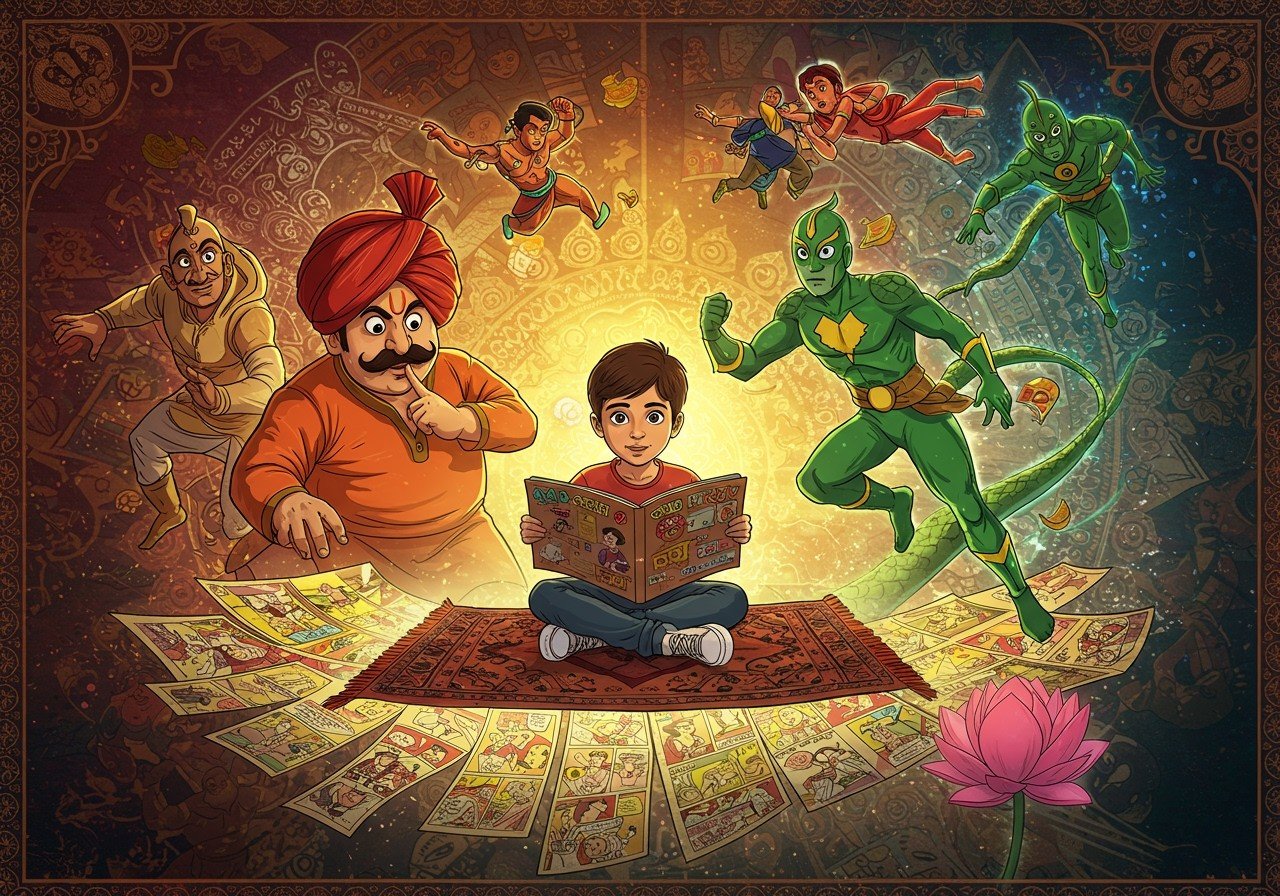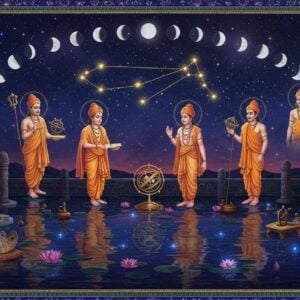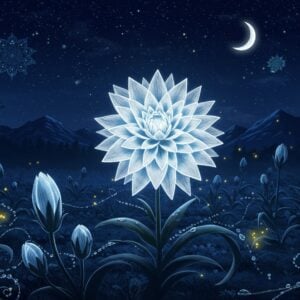
Indian comics in Hindi, known as “Chitrakatha” (picture story), are a beloved part of India’s cultural legacy. They offer entertainment and preserve rich narratives, blending tradition with modern accessibility. These comics, ranging from mythological tales to contemporary stories, appeal to a broad audience, especially middle to upper-middle-class Indians aged 25-60.
A Journey Through Indian Comics in Hindi
Hindi comics gained traction after India’s independence. Amar Chitra Katha played a pivotal role, bringing Indian mythology and history to life through vibrant visuals. Raj Comics introduced iconic superheroes like Nagraj and Super Commando Dhruva. Diamond Comics added humor with characters like Chacha Chaudhary. These publications have shaped generations and continue to resonate with readers today.
Indian Comics: A Cultural Tapestry
Indian comics, or “Chitrakatha,” hold a unique place in the hearts of many. They weave together stories that reflect India’s cultural themes and impart moral lessons, distinguishing them from Western comics by their emphasis on values and traditions.
History and Evolution
- Early Beginnings: The Indian comic industry took root in the mid-1960s with Indrajal Comics, published by The Times of India. Earlier publications like the Delhi Sketch Book (1850) and Awadh Punch (1877) featured cartoons and strips, paving the way for the comic format. These early forms of visual storytelling laid the foundation for the vibrant industry that would follow.
- Golden Age: The late 1960s to early 1990s mark the golden age of Indian comics. This era witnessed comics becoming a dominant form of entertainment. In 1967, Anant Pai founded Amar Chitra Katha (ACK), focusing on Indian mythology and culture, making these stories accessible to a wider audience. Diamond Comics, founded in 1978 by Gulshan Rai, introduced beloved characters like Chacha Chaudhary, Billoo, and Pinki, solidifying the place of comics in popular culture.
- Decline: The late 1990s saw a decline in the popularity of comics due to the rise of cable television, the internet, and the gaming industry. These new forms of media provided alternative entertainment options, leading to a shift in consumer preferences.
- Revival: In recent years, the Indian comic industry has experienced a resurgence, thanks to the emergence of new publishing companies and the accessibility of online platforms. These digital platforms have allowed for wider distribution and a renewed interest in the art form.
Key Publishers and Their Creations
- Amar Chitra Katha: Renowned for its adaptations of Indian mythology, history, and folklore. Available in 20 languages, ACK has sold over 90 million copies, highlighting its widespread impact and enduring appeal.
- Diamond Comics: Home to popular characters like Chacha Chaudhary, Billoo, Pinki, and Motu Patlu, Diamond Comics is a major distributor and publisher. They also publish Hindi versions of international comics, including The Phantom, Mandrake, Superman, and Batman, bridging the gap between Indian and Western comics.
- Raj Comics: A dominant force in North India, known for characters like Nagraj, Super Commando Dhruva, and Doga. These characters often incorporate elements of Indian mythology and culture, creating a unique superhero experience.
- Tinkle: A beloved children’s comic magazine featuring Suppandi and Shikari Shambu. As of 2019, Tinkle boasted a circulation of 300,000 copies per issue, demonstrating its continued popularity among young readers.
Iconic Hindi Comic Characters
- Chacha Chaudhary: Created by Pran Kumar Sharma, Chacha Chaudhary is celebrated for his wit and intelligence. He solves complex problems with his quick thinking, making him a relatable and admirable figure.
- Nagraj: A snake-themed superhero from Raj Comics, Nagraj possesses unique powers and fights against evil, embodying the rich symbolism found in Indian mythology.
- Super Commando Dhruva: Another popular Raj Comics superhero, Super Commando Dhruva uses his intellect and detective skills to fight crime. His stories often explore themes of justice and morality.
- Suppandi and Shikari Shambu: These iconic characters from Tinkle magazine entertain readers with their humorous misadventures and quirky personalities. Their lighthearted stories are a source of joy for readers of all ages.
- Billoo and Pinki: Published by Diamond Comics, Billoo and Pinki are beloved characters known for their relatable antics and heartwarming friendship. Their stories often depict everyday situations, making them resonate with young readers.
Where to Find Hindi Comics
- Online Retailers: Platforms like FirstCry.com, Amazon.in, and Flipkart offer a wide selection of Hindi comics. Poojn.in also offers a curated collection of cultural goods and accessories that complement your reading experience, from traditional storage solutions to unique bookmarks.
- Comic Book Stores: Dedicated comic book stores like Hind Comics and Raj Comics Retail Shop offer a more specialized selection. These stores often carry rare and vintage comics, catering to collectors and enthusiasts.
- Publishers’ Websites: Websites like Holy Cow Entertainment and Swayambhu Comics provide direct access to their publications. This is a great way to discover new titles and support independent creators.
Current Trends in Hindi Comics
- Mythology and Folklore: Many Indian comics draw inspiration from ancient mythologies and folktales, keeping these timeless narratives alive for contemporary audiences. These stories offer valuable insights into Indian culture and values.
- Superhero Comics: There’s a growing interest in superhero comics featuring Indian characters and settings. Publishers like Holy Cow Entertainment are at the forefront of this trend, creating unique and engaging stories that resonate with Indian readers. These characters offer a fresh perspective on the superhero genre.
- Digitalization: Comic book publishers have embraced digital platforms, offering e-books and mobile apps to reach wider audiences. This shift towards digital formats has made comics more accessible than ever before.
The Indian comic book industry continues to evolve, blending traditional themes with modern storytelling techniques. This dynamic interplay between tradition and innovation ensures that Indian comics remain a vibrant and engaging form of entertainment for years to come.


